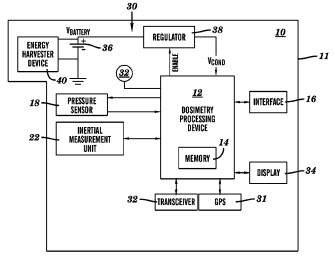9,310,825
Stable Voltage Reference Circuits with Compensation for Non-Negligible Input Current and Methods Thereof
Patent Number
Issue Date
Inventor(s)
Eric Bohannon
Document
Download PDF for patent 9,310,825Synopsis
Patent US 9,310,825 B2 describes stable voltage reference circuits with compensation for non-negligible input current. This invention addresses a critical challenge in electronic circuit design by providing a highly stable and precise voltage reference, even when subjected to input currents that would typically destabilize conventional reference circuits. This is particularly relevant for low-power, high-precision applications.
A key novel aspect of this invention is its unique compensation technique that maintains output voltage stability despite variations in input current. Traditional voltage references often assume negligible input current, leading to inaccuracies when this assumption is violated, especially in power-sensitive or high-impedance circuits. The patent details a circuit architecture that actively compensates for input current effects, ensuring the reference voltage remains exceptionally stable across varying load conditions and environmental factors. This compensation mechanism allows for robust operation in a wider range of applications, including those with stringent power budgets or demanding precision requirements.
The commercial potential for this stable voltage reference circuit is substantial across various segments of the electronics industry:
-
Portable and Battery-Powered Devices: In smartphones, tablets, wearables, and Internet of Things (IoT) devices, power efficiency and stable performance are paramount. This invention enables highly accurate operation of analog-to-digital converters, sensors, and microcontrollers, even when drawing minute, varying currents, leading to longer battery life and improved device reliability.
-
Precision Measurement Instruments: Test and measurement equipment, medical devices, and industrial sensors require extremely stable voltage references for accurate data acquisition. This circuit can significantly enhance the precision and reliability of these instruments, making them suitable for critical applications in scientific research, healthcare diagnostics, and industrial process control.
-
Automotive Electronics: Modern vehicles are equipped with numerous sensors and control units that demand stable power references, particularly for safety-critical systems. This invention can contribute to more reliable sensor readings and control signals in diverse operating conditions, improving overall vehicle performance and safety features.
-
Analog-to-Digital Converters (ADCs) and Digital-to-Analog Converters (DACs): The accuracy of ADCs and DACs directly depends on the stability of their reference voltage. Integrating this technology into these conversion circuits can lead to higher resolution and linearity, which is critical for high-fidelity audio, video, and data acquisition systems.
-
Power Management Integrated Circuits (PMICs): This invention can be incorporated into PMICs to provide highly stable reference voltages for various power rails and control loops, enhancing the overall performance, efficiency, and robustness of power management solutions in complex electronic systems.
-
High-Temperature and Harsh Environment Applications: The inherent stability and compensation mechanisms make this voltage reference suitable for applications in environments with significant temperature fluctuations or electrical noise, where conventional references might drift or become unreliable.
This invention provides a fundamental advancement in voltage reference technology, offering unparalleled stability and precision in the presence of non-negligible input currents. Its robust performance under challenging conditions makes it an essential component for next-generation electronic devices and systems demanding high accuracy and power efficiency.
